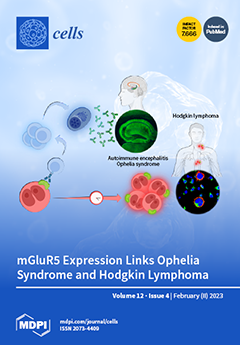Diverse immune cell subsets have been described in IgG4-related disease (IgG4-RD). If there is a different immunophenotype according to clinical phenotype and activity status is not known. Levels of IL-4-, IL-13-, IL-5-, and IL-21-producing CD4
+ T cells (Th2 subsets), CD4
+ cytotoxic
[...] Read more.
Diverse immune cell subsets have been described in IgG4-related disease (IgG4-RD). If there is a different immunophenotype according to clinical phenotype and activity status is not known. Levels of IL-4-, IL-13-, IL-5-, and IL-21-producing CD4
+ T cells (Th2 subsets), CD4
+ cytotoxic T lymphocytes (CD4
+CTLs), T helper 9 cells, T follicular helper cells (Tfh; Tfh1/Tfh2/Tfh17/Tf regulatory [Tfr]), Foxp3
+ regulatory T cells, Type 1 regulatory T cells (Tr1), T helper 3 regulatory cells (Th3), IL-10-producing regulatory B cells (Bregs), IL-10-expressing regulatory plasmacytoid dendritic (pDC IL-10
+) cells, and M1 and M2 monocytes were determined by flow cytometry in 43 IgG4-RD patients and 12 controls. All immune subsets were higher in patients vs. controls. CD4
+/IL-4
+, CD4
+/IL-5
+, CD4
+CTLs, Tfh2, Tfh17, Tfr, and M1 monocyte cell number was different among IgG4-RD clinical phenotypes. The pancreato-hepato-biliary phenotype was characterized by a higher CD4
+CTLs, Tfh17, Tfh2, and Tfr and lower M1 cell number. An increased CD4
+CTLs and Th3 cell number distinguished the head and neck-limited phenotype, while the retroperitoneal/aortic and Mikulicz/systemic phenotypes were characterized by increased Th2 subsets. Tfh17, Tr1, Th3, pDC, M1, and M2 monocytes were augmented in active patients. In summary, the clinical heterogeneity of IgG4-RD might be driven by the participation of different immunophenotypes and, consequently, by a different fibroinflammatory process.
Full article






